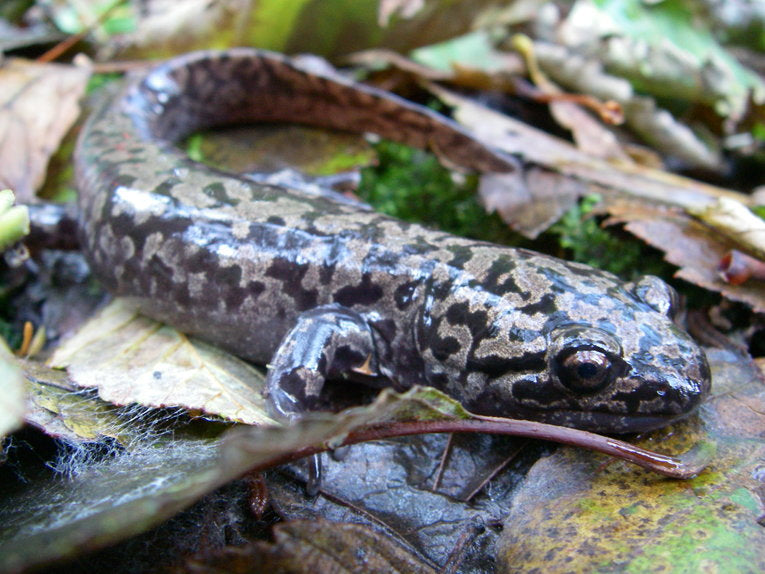Multiple influences on the population genetics of a salamander in the American north-west have been uncovered by the Rachael Y. Dudaniec, Stephen F. Spear, John S. Richardson, and Andrew Storfer of the Universities of British Columbia and Washington State. The value of this work is that knowledge of current landscape patterns can now more accurately be used in the cconservation of many species.
In the case of this, the coastal giant salamander Dicamptodon tenebrosus, a northern population in Canada was founded by many fewer individuals than the southern group which is centred in Washington state, in the US. The history of glaciation in this area is documented as influencing many of the salamanders.
During the early to mid-Pleistocene, between 1.7million to 800,000 years ago, just over 30,000 individuals of this particular species seem to have formed a refuge from the Ice Age in the Columbia River valley. Changes in their population size and migration rates are causes of variations which took place since then, meaning that these amphibians are ideal models of how limited dispersal ability linked to their high sensitivity to the structure of the landscape.
Northern habitats of this Dicamptodon presently include Canada up to the Fraser River, and the US down to the Columbia River valley. This population seems to have expanded after Pleistocene ice (the Ice age) and may have been thought to have reduced genetic variation at the edge of its range.
If the research found this to be untrue, then more recent anthropomorphic effects such as landscape barriers and habitat fragmentation (presumably by the local forestry activity) may have been effective on the species. In this situation, Canada of course has declared the beast as threatened and on the British Columbian Red List.
The US population is much larger and it is not regarded as threatened. Other species too occur in the US, closely related and big! (NB. The enormous Chinese giant salamander is not related, although very much endangered! - by many and various human activities)

Credit: PLoS ONE/doi/10.1371/journal.pone.0036769.g001.
Above Map of three sampling regions in Washington State and British Columbia. 39 streams were chosen randomly between the Fraser and the Columbia rivers. WH = Willapa Hills; SC = South Cascades; CV = Chilliwack Valley - (CV is 400km north of the other two sites)
Simulating the topography, climate and land cover factors in the authors' model was seen as creating a realistic gene flow within the model. The salamanders inhabit small streams up to an 1830m limit, from which they rarely move in their lifespan of 20 years. Many of this genus have neotenic adults that retain gills, just like the famed axolytl, and some of these populations sampled had many "neotenes."
As expected, gene flow between the three populations was very restricted. South Cascades contained most of the core variation. The population of the Chilliwack Valley was apparently very stable recently, but with a large difference in size from the historical low. Genetic variability here at the edge of the range, too, was reduced compared to the other regions.
For variables in the landscape, elevation, slope canopy cover, land-cover, temperature measurements such as frost-free periods and heat load (solar radiation), and precipitation were examples of the possible influences Actual results indicated that land cover and frost-free period were the most influential in the South Cascades sample areas.
Whether historic bio-geographic influences affect population genetics as much as recent change is the question the authors try to answer here. In the north, at the current limit of the species' range, landscape-driven genetic change seems more prominent, just as they thought. The base population, in the south, is more obviously influenced by population dynamics and genetic diversity, themselves influenced by landscape features. Abundance of the species has already been shown to increase with elevation in this area. It has greater allelic richness here, too, providing the diversity to enable adaptations to appear.
Conserving species like this at the limits of their range could be much more important as poleward movement continues to follow global warming effects. The authors have given a lead here in PLoS ONE, to be followed by many researchers as species are reaching their limits (and expanding too as long as the climate allows it.)










